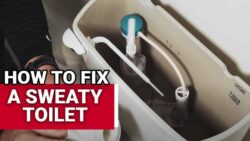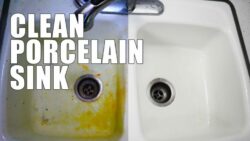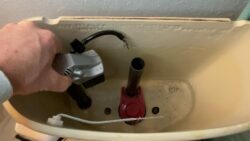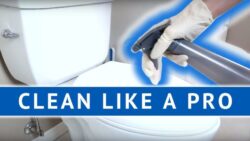In this comprehensive guide, you will learn everything you need to know about fixing a leaky washer. From understanding the common causes of leaks to step-by-step instructions on how to resolve the issue, this article will equip you with the knowledge and skills to tackle this problem with confidence. Whether you are a professional handyman or a novice DIY enthusiast, this guide will provide you with invaluable insights and practical tips to successfully fix a leaky washer and restore its optimal functionality. So, let’s get started and banish those irritating leaks once and for all!
Common Causes of a Leaky Washer
Leaky washers can be caused by a variety of factors. Below are the most common causes of a leaking washer:
Loose or Damaged Hoses
One of the most typical causes of a leaky washer is loose or damaged hoses. Over time, hoses can become loose due to vibrations and movements during the washing cycle. Additionally, hoses can also become damaged or develop small cracks, leading to leaks. Checking the hoses regularly and ensuring they are properly connected and in good condition is essential to prevent leaks.
Faulty Tub Seal
The tub seal of a washer is responsible for preventing water from leaking out of the machine. If the tub seal is worn out or damaged, it can result in leaks. This is especially common in older washers or those that have been in use for a long time. Inspecting the tub seal for any signs of wear or damage and replacing it if necessary can help resolve the leak issue.
Worn Out Pump
The pump of a washer is responsible for draining water from the machine. Over time, the pump can wear out, resulting in leaks. If the pump is faulty, it may not be able to effectively drain the water, leading to water accumulation and leaks. Replacing a worn-out pump can help fix the leak problem and ensure the proper functioning of the washer.
Broken Water Inlet Valve
The water inlet valve is responsible for controlling the flow of water into the washer. If the valve is broken or malfunctioning, it can lead to leaks. A broken water inlet valve can cause water to continuously flow into the washer even when it’s not in use, resulting in leaks. Replacing a broken water inlet valve is necessary to resolve the leak issue.
Clogged Drain Pump Filter
A clogged drain pump filter can also lead to leaks in a washer. The drain pump filter is responsible for trapping debris and preventing it from entering the drain pump. Over time, the filter can become clogged with lint, fabric debris, and other substances, obstructing the water flow and leading to leaks. Regularly cleaning the drain pump filter can help prevent clogs and subsequent leaks.
Issues with the Door Seal
The door seal, also known as the door gasket or boot seal, is responsible for creating a watertight seal when the washer door is closed. If the door seal is damaged, worn out, or not properly aligned, it can result in leaks. Inspecting the door seal for any signs of damage or misalignment and replacing it if necessary can help eliminate leaks.
Tools and Materials You Will Need
Before attempting to fix a leaky washer, it’s important to gather the necessary tools and materials. These may include:
Needle-nose pliers
Needle-nose pliers are a handy tool for gripping and maneuvering small parts and components during the repair process. They are particularly useful for handling hose clamps and other delicate components.
Adjustable wrench
An adjustable wrench is essential for loosening and tightening nuts and bolts of various sizes. It allows for easy adjustment to fit different sizes, making it a versatile tool for washer repair.
Screwdriver set
Having a set of screwdrivers of different sizes and types (such as flathead and Phillips) is crucial for removing screws and accessing the internal components of the washer.
Bucket or towels
A bucket or towel is useful for containing and soaking up water that may leak during the repair process. They can help minimize any potential mess and prevent water damage to the surrounding area.
Replacement parts (if necessary)
Depending on the specific issue causing the leak, you may need replacement parts such as hoses, tub seals, pumps, water inlet valves, or door seals. It’s important to identify the faulty component and have the necessary replacement part on hand before beginning the repair.
Step-by-Step Guide to Fixing a Leaky Washer
Now that you have gathered the necessary tools and materials, let’s walk through the step-by-step process of fixing a leaky washer.
Step 1: Safety Precautions
Before starting any repair work on your washer, it is important to prioritize safety. Make sure to unplug the washer from the power source to avoid the risk of electric shock. Additionally, it is recommended to wear protective gloves and goggles to protect yourself from any potential hazards.
Step 2: Unplug the washer
To ensure your safety and prevent any electrical mishaps, unplug the washer from the power source. This will eliminate the risk of electric shock during the repair process.
Step 3: Shut Off the Water Supply
Before you begin fixing the leak, it’s essential to shut off the water supply to the washer. Locate the water valves behind or near the washer and turn them off. This will prevent any water from flowing into the machine while you are working on it.
Step 4: Identify the Source of the Leak
To effectively fix the leak, you need to identify its source. Carefully inspect the washer and look for any visible signs of water leakage. Pay close attention to the hoses, tub seal, pump, water inlet valve, and door seal. Determining the exact location of the leak will guide you in the subsequent repair steps.
Step 5: Fixing Loose or Damaged Hoses
If the leak is caused by loose or damaged hoses, you can easily fix it. Using your adjustable wrench, tighten any loose hose connections. If the hoses are damaged, you will need to replace them with new ones. Disconnect the old hoses using needle-nose pliers if necessary and install the new hoses, making sure they are securely connected.
Step 6: Replacing a Faulty Tub Seal
If the tub seal is identified as the source of the leakage, it will need to be replaced. Refer to your washer’s manual for specific instructions on how to access and replace the tub seal. Typically, this involves removing the top or front panel of the washer, disconnecting the old seal, and installing the new one. Follow the manufacturer’s guidelines and ensure that the new tub seal is properly aligned and sealed.
Step 7: Repairing a Worn-Out Pump
A worn-out pump can be the culprit behind a leaky washer. To repair it, follow the manufacturer’s instructions on accessing and replacing the pump. Disconnect the power supply and any hoses connected to the pump. Remove the old pump and install the new one, ensuring it is securely fastened and all connections are properly reattached.
Step 8: Replacing a Broken Water Inlet Valve
If the water inlet valve is broken, it will need to be replaced to resolve the leak issue. Disconnect the power supply and water hoses connected to the valve. Remove the old valve by unscrewing any fasteners or clamps securing it in place. Install the new valve, making sure it is properly aligned and tightly secured. Reconnect the power supply and water hoses.
Step 9: Cleaning the Clogged Drain Pump Filter
A clogged drain pump filter can be easily cleaned to eliminate leaks. Locate the drain pump filter, which is typically found at the front or bottom of the washer. Place a bucket or towels underneath to catch any water that may spill. Remove the filter and clean it thoroughly, removing any debris or clogs. Once cleaned, reinsert the filter and ensure it is securely in place.
Step 10: Fixing Issues with the Door Seal
If the door seal is damaged or misaligned, it can lead to leaks. Inspect the door seal for any signs of wear or damage. If necessary, remove the old seal with the help of a screwdriver and install a new one. Ensure the new seal is properly aligned and creates a tight seal when the washer door is closed.
Preventive Measures to Avoid Future Leaks
Fixing a leaky washer is essential, but it’s also important to take preventive measures to avoid future leaks. Here are some preventive measures you can take:
Regularly Inspect and Replace Hoses
Periodically inspect the hoses of your washer for any signs of wear, damage, or looseness. Replace any hoses that show signs of deterioration to avoid leaks.
Avoid Overloading the Washer
Overloading the washer can put excessive strain on its components, including hoses and seals, leading to leaks. Follow the manufacturer’s recommendations for the maximum load capacity and avoid overloading the machine.
Clean the Washer and Tub Regularly
Regularly clean the washer and its tub to prevent the accumulation of dirt, debris, and detergent residue. This can help maintain the proper functioning of the washer and prevent leaks.
Use the Recommended Amount of Detergent
Using excessive detergent can create excessive suds and put stress on the washer’s components, potentially leading to leaks. Follow the manufacturer’s guidelines and use the recommended amount of detergent for each load.
Check and Maintain Water Inlet Valves
Periodically inspect the water inlet valves for any signs of damage or malfunctioning. Replace any faulty valves to ensure proper water flow and prevent leaks.
When to Seek Professional Help
While many leak issues can be resolved by following the steps outlined above, there are instances where it may be necessary to seek professional help. Here are some situations where professional assistance may be required:
Complex Repairs
If you encounter complex repair issues during the process or are unsure of how to proceed, it’s best to consult a professional technician. They have the expertise and experience to tackle complex repairs and identify any underlying issues causing the leaks.
Safety Concerns
If you have concerns about your safety or the risk of electrical or mechanical hazards during the repair process, it’s important to prioritize your well-being and contact a professional technician. They will ensure that the repair is done safely and effectively.
Inability to Diagnose the Issue
If you are unable to accurately identify the source of the leak or determine the necessary repairs, it’s advisable to seek professional help. They will be able to diagnose the issue accurately and provide the appropriate solutions.
Conclusion
Fixing a leaky washer is essential to prevent water damage and maintain the proper functioning of the machine. By identifying common causes such as loose or damaged hoses, faulty tub seals, worn-out pumps, broken water inlet valves, clogged drain pump filters, and issues with the door seal, you can effectively address the problem. Following the step-by-step guide and taking preventive measures such as regular inspections and cleaning can help you avoid future leaks.
Remember that in cases of complex repairs, safety concerns, or an inability to diagnose the issue, seeking professional help is always a wise decision. With proper maintenance and timely repairs, you can keep your washer leak-free and save money in the long run. Regular inspections and cleaning are vital to ensure the longevity and efficiency of your washer.





